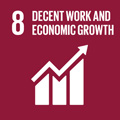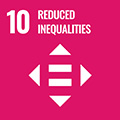- Docente: Stefano Tomassetti
- Credits: 6
- SSD: M-STO/02
- Language: Italian
- Teaching Mode: Traditional lectures
- Campus: Ravenna
- Corso: First cycle degree programme (L) in Mediterranean History, Societies and Cultures (cod. 5974)
-
from Mar 19, 2025 to Apr 23, 2025
Learning outcomes
The course aims at reconstructing the historical-political and the economic-social evolution of the Mediterranean and the Atlantic area in the declining phase of the former and the rising phase of the latter. The teaching focuses on the emergence of new multi-ethnic communities in the aftermath of the great geographical discoveries and the intertwining of migrations and movements of human beings, goods and capital. At the end of the course the student is able to interpret the fundamental historical junction of the oceanic discoveries and to know the complexity and heterogeneity interconnected between the Mediterranean area and the emerging Atlantic area between the end of the 15th century and the beginning of the 18th century. The space of the modern will thus assume an original declination, centred on the interpenetration between the so-called ‘old’ and the so-called ‘new’ world.
Course contents
The course provides an overview of the historical development of the Atlantic and Mediterranean areas in the early modern age, within a comparative and integrated perspective that aims to solicit a reflection on the interconnections between the two contexts, but also on their respective peculiarities.
After providing the essential historical coordinates on the development of the respective areas, the lessons will focus on a phenomenon that constitutes a common ground: the slavery. Its main characteristics will be examined, highlighting the specificities of the phenomenon in the two areas, in their historical evolution during the centuries of the modern age. A comparative reflection on the differences and common features of Atlantic and Mediterranean slavery will also be solicited, focusing on selected themes, intertwining political, cultural, social and religious history.
Readings/Bibliography
FOR ATTENDING STUDENTS:
*Students who attend at least 75% of the lessons are considered to be attending
A. Materials used during the lectures (slides, lecture notes)
B. A volume to be chosen from:
- Salvatore Bono, Schiavi. Una storia mediterranea (XVI-XIX secolo), Bologna, Il Mulino, 2016
- Andrea Zappia, Mercanti di uomini. Reti e intermediari per la liberazione dei captivi nel Mediterraneo, Novi Ligure, Città del silenzio, 2018
- Serena Di Nepi, I confini della salvezza. Schiavitù, conversione e libertà nella Roma di età moderna, Roma, Viella, 2022
C. A volume to be chosen from:
- John Thornton, L’Africa e gli africani nella formazione del mondo atlantico. 1400-1800, Bologna, Il Mulino, 2004 (with the exception of chapther I)
- Alessandro Tuccillo, Il commercio infame. Antischiavismo e diritti dell'uomo nel Settecento italiano, Napoli, ClioPress, 2013
- Aurélia Michel, Il bianco e il negro. Indagine storica sull’ordine razzista, Torino, Einaudi, 2021 (only the chapters I-X)
OR
- Materials used during the lectures (slides, lecture notes)
- Introduzione alla storia moderna. Seconda edizione, a cura di Marco Bellabarba e Vincenzo Lavenia, Bologna, Il Mulino, 2023 (only the chapters I, III, IV, V, VIII, XIX, XX, XXI, XXIV, XXV, XXXI, XXXIV, XXXV, XXXVI, XXXVII)
- A volume to be chosen from those listed above, under B or C
FOR NON ATTENDING STUDENTS:
- Francesca Canale Cama, Daniela Casanova, Rosa Maria Delli Quadri, Storia del Mediterraneo moderno e contemporaneo, Napoli, Guida, 2009/2017 (only the parts II, III, IV, V)
- Federica Morelli, Il mondo atlantico. Una storia senza confini (secoli XV-XIX), Roma, Carocci, 2013
- A volume to be chosen from those listed above, under B or C
Teaching methods
Formal lectures, guided source analysis
Assessment methods
The examination is oral. An excellent grade will be reserved for those who demonstrate a confident and autonomous orientation in the historical and historiographical panorama of the subject, presenting the contents in an adequate and effective form. Those who demonstrate a good assimilation of historical concepts in an acceptable form and language will receive a good grade. Those students who demonstrate gaps in contents and/or the use of an inappropriate exposition will receive a satisfactory grade. Those who demonstrate serious gaps in content and marked difficulties in exposition will receive a failing grade.
Teaching tools
Use of printed sources and historiographical texts, maps, virtual images
Office hours
See the website of Stefano Tomassetti
SDGs


This teaching activity contributes to the achievement of the Sustainable Development Goals of the UN 2030 Agenda.
